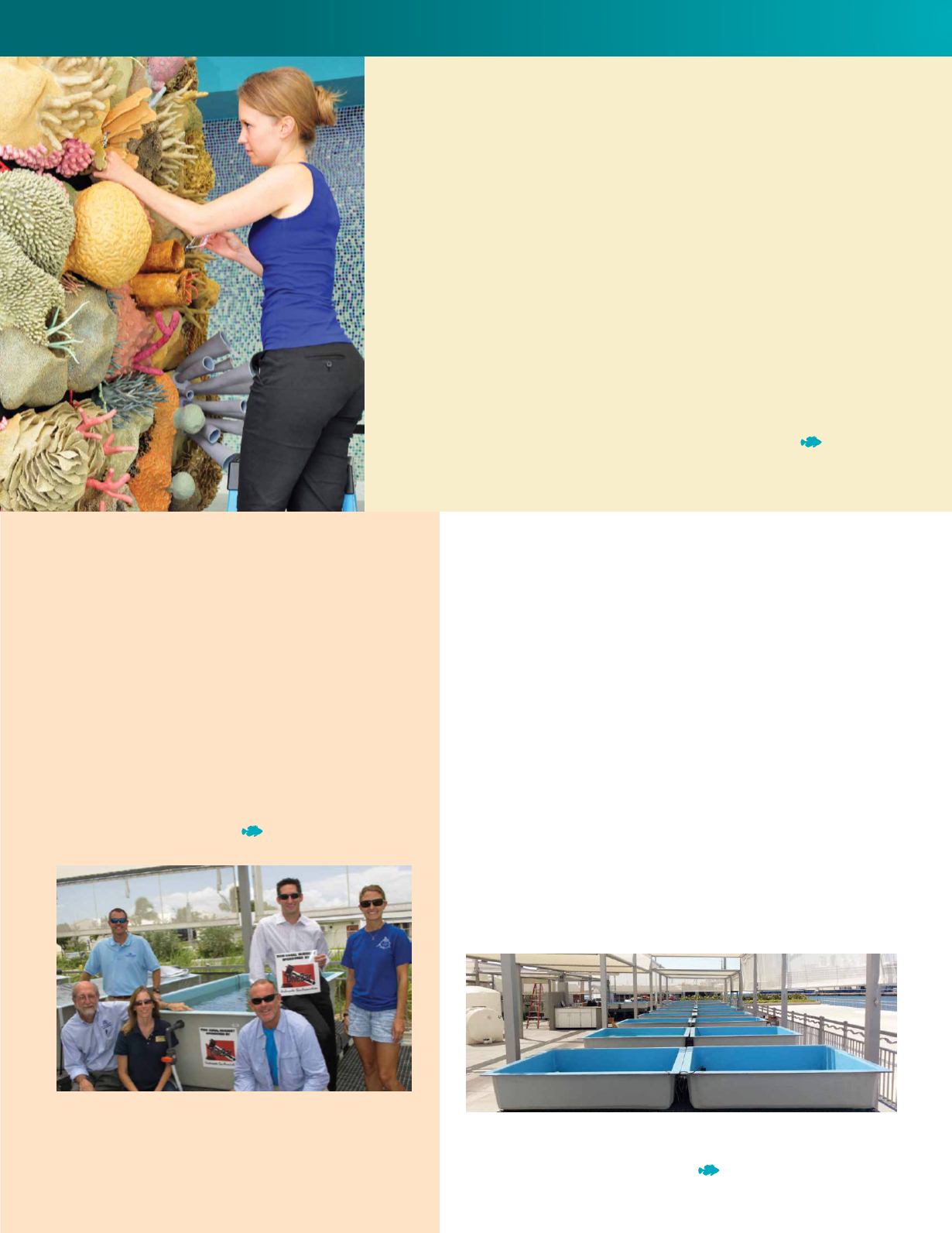
8
SECOR System Installed at OC
This March, a new SECOR Environmental Pollutant Experimental
System was installed at the new Center of Excellence for Coral
Reef Ecosystems Research building. The system, a result of a
donation fromthe SECOR foundation, consists of 30 independent,
flow-through, experimental units and is designed for short-
and long-term dosing and threshold experimentation with a
variety of environmental pollutants, toxicants, and physical
stressors. Each unit consists of a 40-gallon tank for experimental
organisms, and each one has two, 30-gallon mixing tanks—
contained within a water bath that has both a chiller and a heater
to enable precise temperature control. The experimental tank
and mixing tanks are fully enclosed and have a low headspace to
water volume to control loss of volatile components. Treatment
water is transferred from mixing tank to treatment tank by
peristaltic pumps with PVDF tubing and process piping to
facilitate accurate and reproducible dosing rate with minimal
loss of volatile fractions. The system is also equipped with a pH
controlled CO2 dosing system for climate change and ocean
acidification experimentation.
Our Changing Seas
Sculpture Installed
in Center of Excellence for Coral Reef
Ecosystems Research Lobby
In July, artist Courtney Mattison installed her sculpture,
Our Changing Seas
, in
the lobby of the Center of Excellence for Coral Reef Ecosystems Research. The
piece illustrated the transition froma healthy, diverse, and vibrant Atlantic and
Caribbean reef ecosystem into a degraded one. Although the coral reefs are
suffering from coral bleaching due to climate change and algal-domination,
resulting from overfishing and nutrient pollution, the sculpture represents a
message of hope for recovery.
Mattison first began sculpting marine invertebrates to better understand
their anatomy and ecology. As her skills developed, she says she “began to
appreciate both the threats to coral reefs and the ability of art to evoke
emotional connections to them.” She adds, “If my work can influence others
to appreciate the fragile beauty of our endangered coral reef ecosystems,
perhaps we will act more wholeheartedly to conserve them.”
Artist Courtney Mattison installs
Our Changing Seas
.
From left (seated): Richard Dodge, Ph.D., Oceanographic Center
dean; Abigail Renegar, Ph.D. candidate; Bob Kelley, DiveBar
founder; (standing): David Gilliam, Ph.D.; David Black, DiveBar
president (holding sign); Elizabeth Larson, Ph.D. candidate.
Coral Nursery Sponsored
by DiveBar
The DiveBar—a bar association composed of legal
professionals who promote education and awareness
about coral reefs and themarine environment through
scuba diving, philanthropic activities, and learning
experiences—has become the first sponsor of the
Oceanographic Center’s land-based coral nursery
tanks. Members of the DiveBar also conducted the
first volunteer dive, on May 11, to help with the
offshore coral nursery.
Dave Gilliam
, Ph.D., assistant
professor, and his students led the dive. Gilliam’s
research lab will host two more volunteer dives this
year for DiveBar members.
The new system adds significant scientific capability for the
Oceanographic Center to study effects of climate change and
pollution on coral reef organisms.


